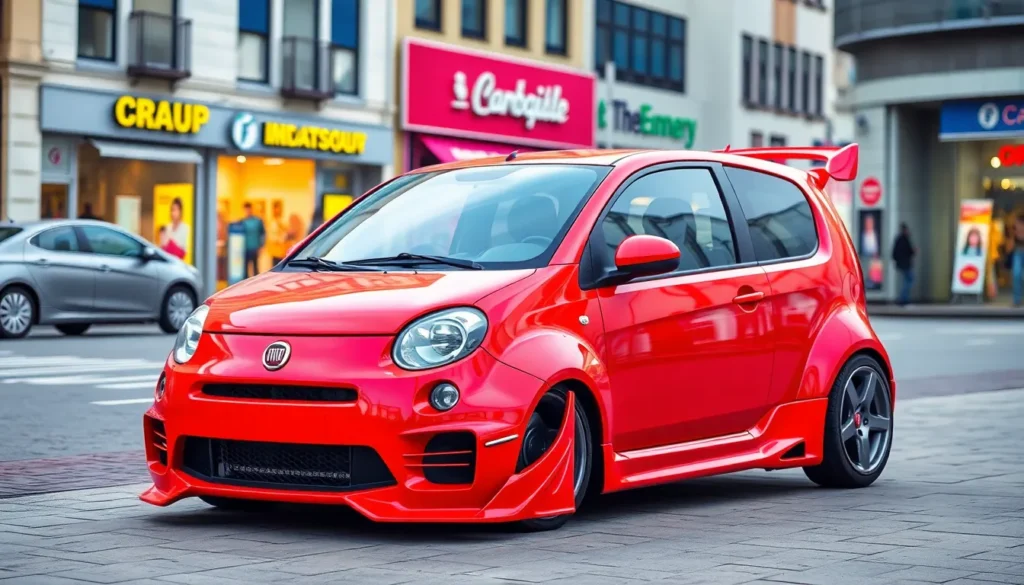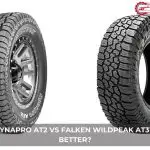The Fiat Uno has captured hearts worldwide as one of the most versatile and affordable platforms for automotive customization. We’ve witnessed countless enthusiasts transform these compact Italian gems into stunning personalized machines that reflect their unique style and personality. From subtle aesthetic upgrades to complete ground-up builds, the possibilities are truly endless.
What makes the Fiat Uno such an incredible canvas for customization? We’ll explore how its lightweight chassis, simple mechanics, and affordable parts make it the perfect starter project for both novice builders and seasoned professionals. Whether you’re dreaming of a lowered street cruiser, a track-focused build, or a show-stopping display car, this compact legend delivers exceptional results.
We’re diving deep into the industry of customized Fiat Unos to show you exactly how these transformations happen. From engine swaps and suspension modifications to interior overhauls and exterior styling, we’ll guide you through the most popular modifications that’ll turn your humble Uno into something extraordinary.
Understanding the Fiat Uno: A Perfect Canvas for Customization
The Fiat Uno stands as one of automotive history’s most adaptable platforms for custom modifications. We’ll explore what makes this Italian compact car such a favorite among customization enthusiasts worldwide.
Original Design Philosophy and Features
Simplicity defined the Fiat Uno’s original design when it debuted in 1983. Engineers created a lightweight vehicle weighing just 1,653 pounds that prioritized practicality over complexity. The car featured a straightforward unibody construction with minimal electronic systems.
Affordability drove every design decision throughout the Uno’s development process. Fiat positioned this model as an entry-level vehicle for European families seeking reliable transportation. Basic mechanical components like carbureted engines and manual transmissions kept production costs low while ensuring easy maintenance.
Reliability emerged from the Uno’s uncomplicated engineering approach. The original powertrains included naturally aspirated engines ranging from 0.9L to 1.4L displacement. These air-cooled and water-cooled units delivered modest performance but exceptional durability across various driving conditions.
Why the Fiat Uno Appeals to Custom Car Enthusiasts
Mechanical Simplicity makes the Fiat Uno incredibly accessible for first-time customizers. We find that beginners can easily understand the car’s basic systems without advanced automotive knowledge. The straightforward engine bay layout provides ample working space for modifications and upgrades.
Lightweight Construction creates exceptional performance potential when combined with engine swaps or forced induction systems. Custom builders regularly achieve impressive power-to-weight ratios by installing turbocharged engines in the Uno’s compact chassis. This foundation allows for dramatic acceleration improvements with relatively modest power increases.
Affordable Parts Availability keeps customization projects within reasonable budgets for most enthusiasts. European salvage yards stock abundant Uno components while aftermarket manufacturers produce performance parts specifically for this platform. We’ve observed that complete engine swaps can cost significantly less than similar modifications on other vehicles.
Modification Flexibility allows builders to pursue various customization directions without structural limitations. The Uno’s chassis accepts everything from rally-inspired suspension setups to drag racing configurations. Interior modifications range from simple cosmetic updates to complete custom fabrication projects.
Strong Community Support provides invaluable resources for customization projects through online forums and local car clubs. Experienced builders frequently share detailed modification guides and troubleshooting advice with newcomers. This knowledge base accelerates project completion times while reducing common mistakes.
Engine Performance Modifications for Your Fiat Uno Customizado
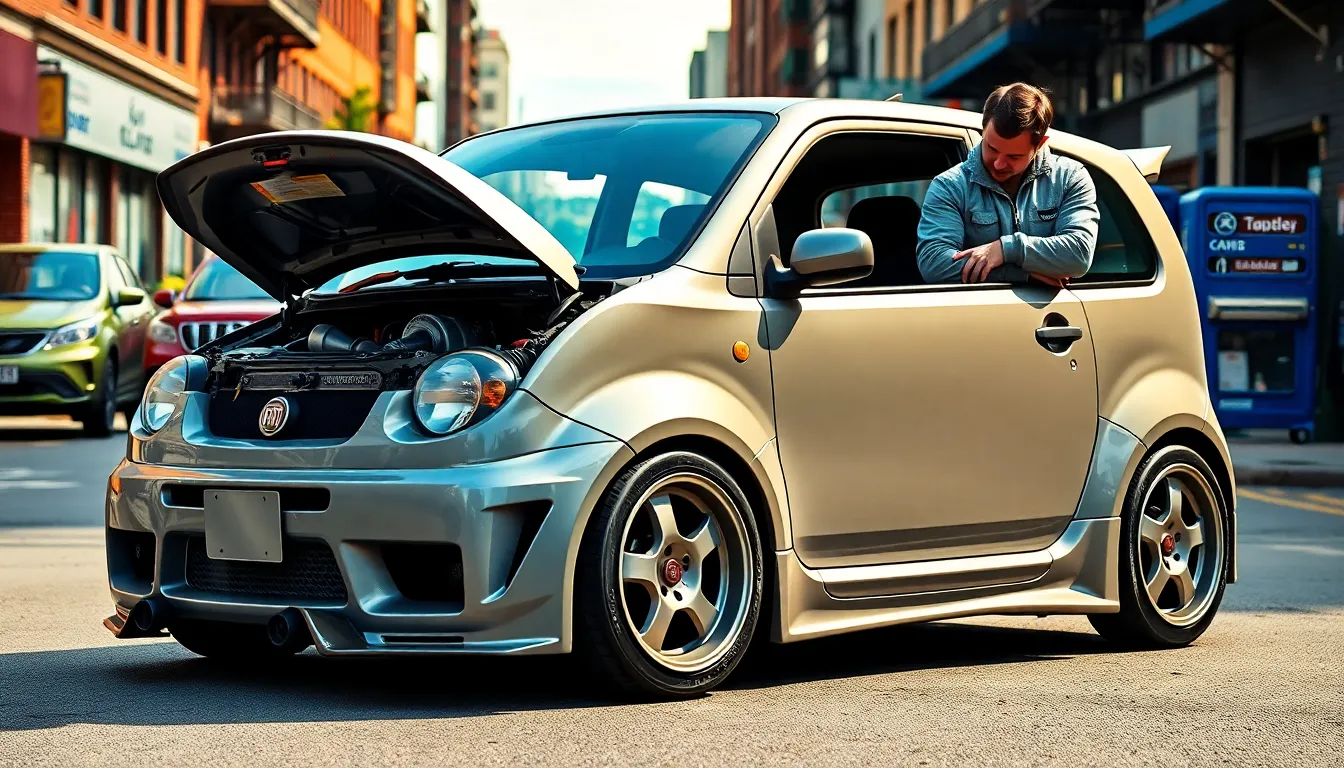
Power upgrades transform the Fiat Uno’s modest performance into something truly exciting. We’ll explore three essential engine modifications that deliver the most impact for custom Uno builds.
Turbocharging and Supercharging Options
Turbocharging systems offer the most cost effective power increase for Fiat Uno engines. We recommend starting with a small T25 turbo setup that can boost power output from the stock 70hp to approximately 120-140hp safely. The FIRE engine series responds particularly well to forced induction modifications due to its robust bottom end construction.
Supercharging provides instant throttle response without turbo lag concerns. Roots style superchargers work best with the 1.4L FIRE engine, delivering consistent power delivery throughout the RPM range. Installation typically requires custom mounting brackets and modified intake manifolds.
Budget considerations play a crucial role in forced induction choices. Turbo kits range from $800-2,500 depending on component quality, while supercharger installations often cost $1,200-3,500 complete. Both options require supporting modifications like upgraded fuel systems and stronger internals for long term reliability.
ECU Tuning and Chip Modifications
Electronic control unit modifications unlock hidden potential in modern Fiat Uno engines. We achieve important gains through remapping the factory ECU parameters for fuel delivery, ignition timing, and boost control. Most FIRE engines respond well to conservative tune adjustments that increase power by 15-25%.
Standalone ECU systems provide maximum tuning flexibility for heavily modified engines. Popular options include Megasquirt, AEM, and Haltech units that offer complete engine management control. These systems become essential when running forced induction or engine swap configurations.
Chip tuning represents the most affordable entry point into ECU modifications. Simple plug and play chips cost $150-400 and deliver noticeable improvements in throttle response and mid range power. Professional dyno tuning ensures optimal results and prevents engine damage from aggressive timing maps.
Exhaust System Upgrades
Performance exhaust systems reduce backpressure and improve engine breathing characteristics. We recommend starting with a high flow catalytic converter and progressing to a complete cat back system for maximum benefits. Stainless steel construction ensures longevity in various climate conditions.
Header upgrades provide the foundation for exhaust flow improvements. Tubular headers replace restrictive factory manifolds and can increase power by 8-15hp on naturally aspirated engines. Equal length designs work best for turbo applications to maintain consistent exhaust pulse timing.
Sound considerations matter when selecting exhaust components for street driven vehicles. Straight through muffler designs produce aggressive exhaust notes but may create noise ordinance issues. Chambered mufflers offer a compromise between performance and acceptable sound levels for daily driving scenarios.
Exterior Styling Transformations That Define Fiat Uno Customizado
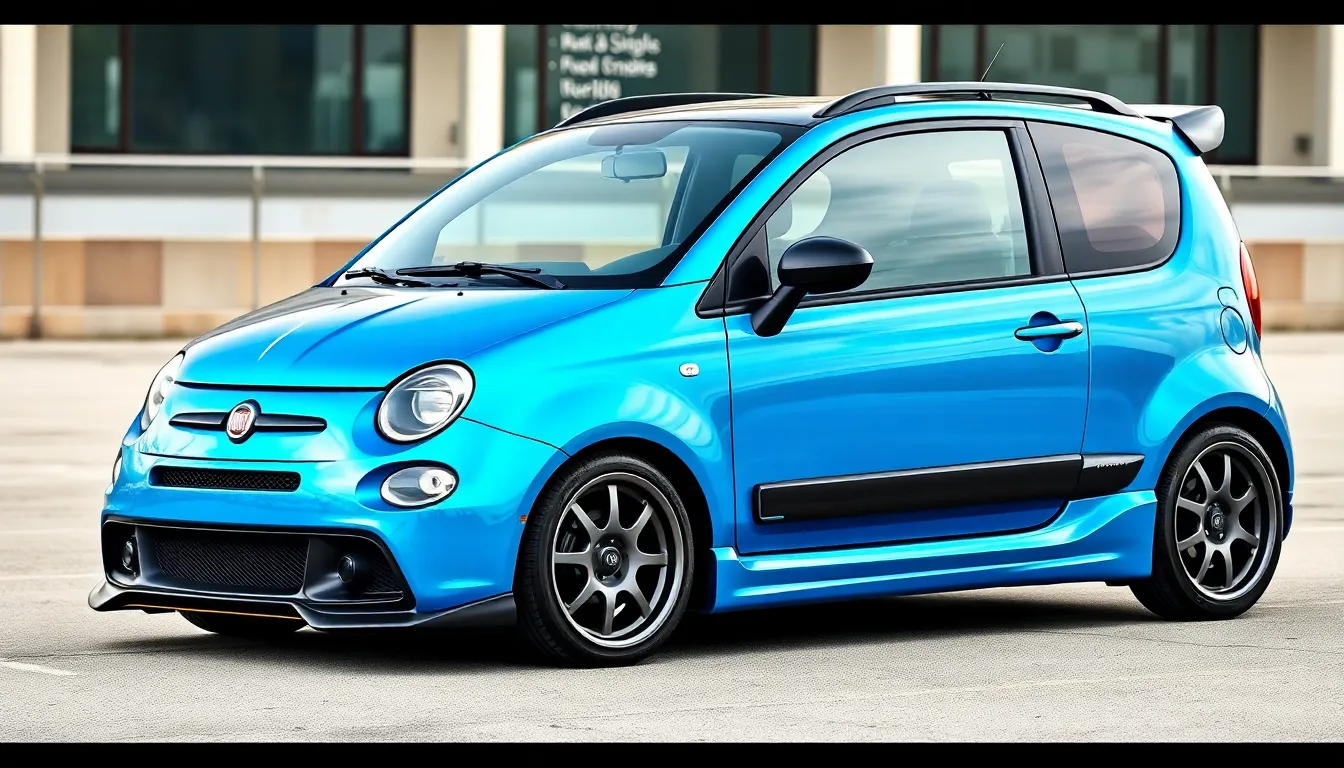
We’ve covered the engine modifications that unleash the Uno’s hidden power potential, and now it’s time to explore how exterior styling transforms these compact cars into true visual statements. The exterior modifications we’re about to discuss complement the performance upgrades while creating the distinctive look that defines a well-executed Fiat Uno customizado project.
Body Kit Installation and Aerodynamic Enhancements
Front spoiler installations dramatically alter the Uno’s nose profile while improving airflow management at higher speeds. Popular options include the aggressive Abarth-style front lip spoilers that cost between $150-300 and provide genuine aerodynamic benefits above 50 mph. Side skirts create visual continuity along the car’s profile, with fiberglass versions offering durability for around $200-400 per set.
Rear wing additions serve both functional and aesthetic purposes on modified Fiat Unos. Duck tail spoilers maintain the car’s classic proportions while adding subtle downforce, typically priced at $100-250 for quality aftermarket pieces. Larger adjustable wings work best on track-focused builds where maximum aerodynamic efficiency takes priority over street practicality.
Custom bumper modifications allow builders to integrate unique design elements like additional air intakes or fog light housings. Fiberglass bumper replacements cost approximately $300-600 and often require professional installation to achieve proper fitment. Mesh grille inserts and splitter extensions further enhance the aggressive styling that distinguishes customized Unos from stock examples.
Custom Paint Jobs and Vinyl Wraps
Professional paint services transform Fiat Uno exteriors with stunning results that can cost $2,000-5,000 for show-quality finishes. Metallic and pearl effects work particularly well on the Uno’s simple body lines, with popular choices including deep blues, vibrant reds, and classic racing stripes. Multi-stage paint processes involving primer, base coat, and clear coat provide long-lasting protection against weather and UV damage.
Vinyl wrap applications offer more affordable alternatives starting around $800-1,500 for complete coverage by experienced installers. Matte black wraps create an understated yet modern appearance, while carbon fiber patterns add texture without the weight of actual carbon components. Partial wraps focusing on exact panels like the hood or roof provide budget-conscious styling options for around $300-600.
Custom graphic designs allow Uno owners to express individual creativity through unique patterns, logos, or racing-inspired liveries. Digital printing technology enables reproduction of virtually any design concept, with costs varying from $500-2,000 depending on complexity and coverage area. Removable graphics protect the original paint while enabling future design changes without permanent modifications.
Wheel and Tire Upgrades
Lightweight alloy wheels reduce unsprung weight while dramatically improving the Uno’s visual appeal and handling characteristics. Popular sizing options include 15×7 and 16×7 configurations that maintain reasonable tire costs while providing adequate brake clearance. Quality aftermarket wheels from brands like OZ Racing or Sparco typically cost $800-1,500 for a complete set.
Performance tire selections maximize the benefits of wheel upgrades through improved grip and responsiveness. Summer performance compounds like Bridgestone Potenza or Michelin Pilot Sport provide excellent dry weather traction for spirited driving. All-season alternatives balance year-round usability with enhanced performance compared to original equipment tires.
Sizing considerations become crucial when selecting wheel and tire combinations for customized Fiat Unos. Going too large creates ride quality issues and increases replacement costs, while insufficient sizing limits the visual impact of the upgrade. Most builders find 15-16 inch wheels provide the optimal balance between appearance, performance, and practicality for street-driven Uno customizado projects.
Interior Custom Modifications to Elevate Your Fiat Uno Experience
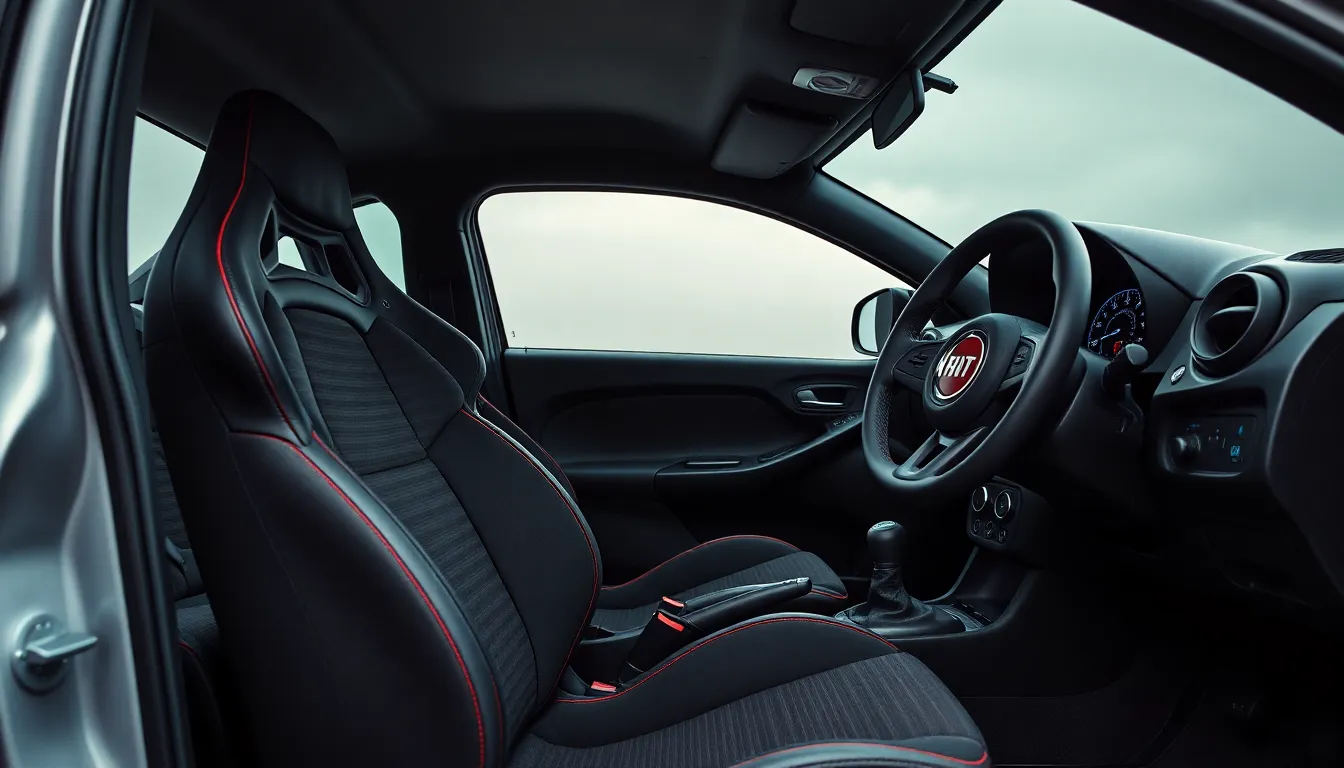
Interior modifications transform your Fiat Uno from a basic economy car into a personalized driving environment that reflects your style and enhances the overall experience.
Racing Seats and Harness Systems
Racing seats provide the foundation for any serious Fiat Uno interior upgrade. Bucket seats from manufacturers like Sparco, Recaro, or OMP improve lateral support during cornering and reduce driver fatigue on longer drives. Fixed back racing seats weigh approximately 15-20 pounds compared to the stock seats’ 35-40 pounds, contributing to overall weight reduction.
Installation requires custom mounting brackets or universal seat rails to secure aftermarket seats to your Uno’s floor pan. Professional fabrication ensures proper positioning and safety compliance, particularly when integrating with airbag systems in newer Uno models. Seat height adjustments become crucial for maintaining proper visibility and pedal reach.
Harness systems complement racing seats by providing superior restraint during performance driving. Four point or six point racing harnesses distribute crash forces across stronger body areas than standard seatbelts. Mounting points require reinforcement plates welded to the chassis, following FIA or SFI safety standards for competitive use.
Harness bar installation creates proper mounting angles for shoulder straps when roll cages aren’t present. Quality harness bars from companies like Cipher Auto or NRG cost $150-300 and bolt directly to existing seatbelt mounting points. Daily driving considerations include the inconvenience of multi point harnesses compared to standard three point belts.
Custom Dashboard and Gauge Clusters
Digital gauge clusters replace the Uno’s basic analog instruments with modern displays showing engine parameters, performance data, and customizable layouts. Units from AEM, Stack, or Haltech integrate with aftermarket ECUs to monitor boost pressure, air/fuel ratios, and exhaust gas temperatures. Installation typically requires custom dash fabrication or mounting pods.
Gauge pod additions accommodate extra instruments without replacing the entire cluster. A pillar pods, center console mounts, or dashboard top installations house gauges for turbo applications or engine monitoring. Popular gauge combinations include boost, oil pressure, oil temperature, and water temperature for turbocharged Uno builds.
Custom dashboard covers refresh worn interior surfaces while adding modern materials like carbon fiber, aluminum, or textured vinyl. Dashboard caps from manufacturers like Coverlay cost $200-400 and install over existing dashboards without removal. Complete dashboard replacements offer more dramatic transformations but require important fabrication work.
Interior trim upgrades extend beyond gauges to include custom door panels, center console modifications, and accent pieces. Carbon fiber or wood grain vinyl wraps provide cost effective alternatives to genuine materials. Aluminum or stainless steel trim pieces add metallic accents to air vents, shifter surrounds, and door handles.
Audio System Upgrades and Sound Dampening
Head unit replacement modernizes your Uno’s entertainment system with features like Bluetooth connectivity, smartphone integration, and navigation. Single DIN units fit the Uno’s standard opening, with options from Pioneer, Kenwood, or Alpine starting around $150. Double DIN conversions require dashboard modifications but accommodate larger touchscreen displays.
Speaker upgrades dramatically improve sound quality over factory speakers. Component speaker systems separate tweeters and woofers for better frequency response, while coaxial speakers offer simpler installation. Door speaker installations in the Uno typically accommodate 5.25 inch or 6.5 inch speakers with minimal modifications to mounting locations.
Amplifier installation powers aftermarket speakers and subwoofers properly. Compact amplifiers mount under seats or in the trunk area, with power ratings matching speaker requirements. Four channel amplifiers drive front and rear speakers, while dedicated subwoofer amplifiers handle low frequency reproduction. Wiring upgrades include larger gauge power cables and proper grounding techniques.
Sound dampening materials reduce road noise and improve audio quality by eliminating vibrations and external sounds. Dynamat, Second Skin, or similar products apply to door panels, floor pans, and interior surfaces. Complete sound dampening treatments cost $200-500 and significantly enhance both audio performance and driving comfort in the naturally noisy Uno cabin.
Suspension and Handling Improvements for Enhanced Performance
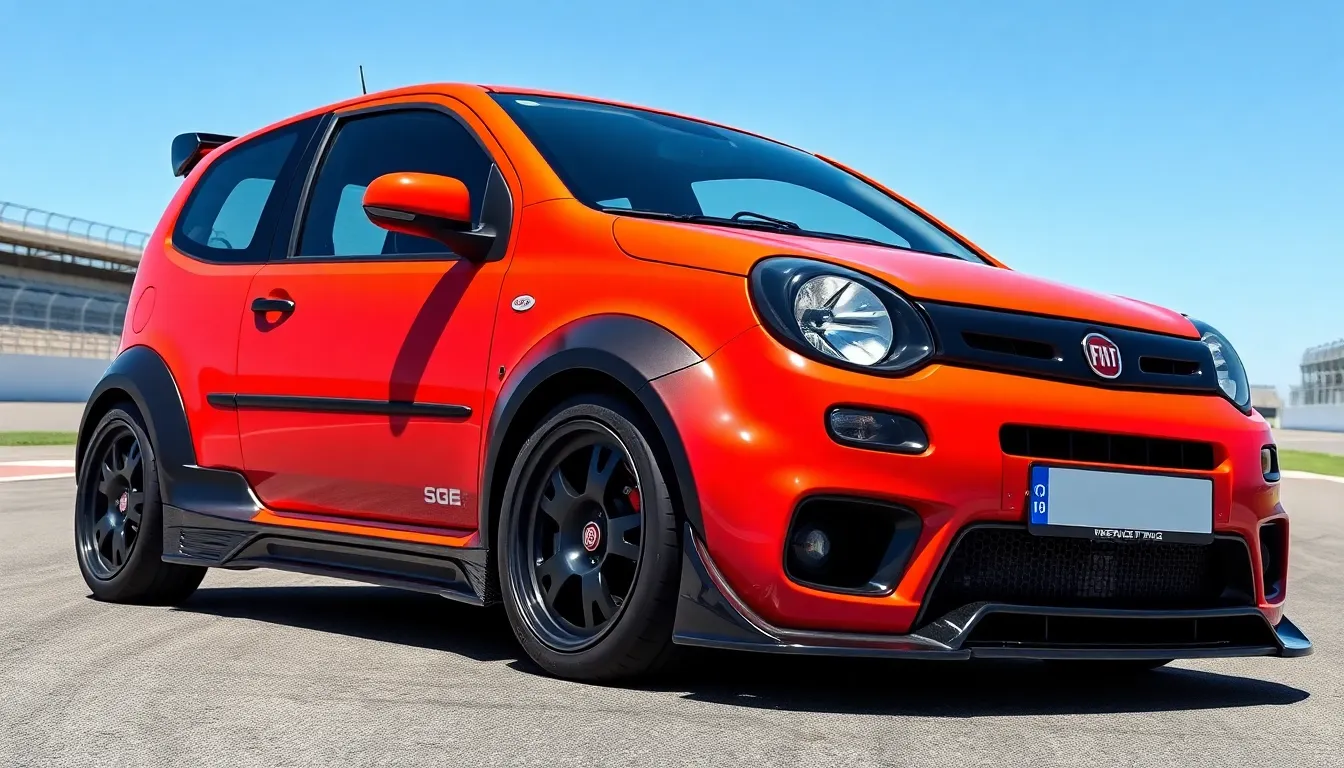
Building on our engine and interior modifications, we’ll now explore how suspension upgrades can transform your Fiat Uno customizado into a precise handling machine. These performance enhancements work in harmony with the power modifications we’ve already discussed to create a well-balanced custom vehicle.
Lowering Springs and Coilover Systems
Lowering springs represent the most popular suspension modification for Fiat Uno customizado projects due to their affordability and noticeable impact on both aesthetics and performance. We recommend a drop of 1.5 to 2 inches for street driven vehicles, which improves the center of gravity while maintaining comfortable ride quality. Progressive rate springs from manufacturers like Eibach or H&R typically cost between $200-400 and provide excellent value for money.
Coilover systems offer superior adjustability and performance compared to lowering springs alone. Full coilover setups allow us to fine tune both ride height and damping characteristics to match our driving preferences. Entry level coilovers from brands like FK or Raceland start around $600, while premium options from Bilstein or KW can reach $1,500-2,000. These systems provide independent adjustment of compression and rebound damping, enabling precise handling characteristics for track or street use.
Installation complexity varies significantly between these options. Lowering springs can typically be installed using basic tools and a spring compressor, making them accessible for DIY enthusiasts. Coilover systems require more extensive work including strut removal and reassembly, often necessitating professional installation to ensure proper alignment and safety.
Anti-Roll Bars and Strut Tower Braces
Anti-roll bars dramatically reduce body roll during cornering and enhance the connected feel between driver and road. We typically see the most benefit from upgrading the rear anti-roll bar first, as the Uno’s front heavy weight distribution creates understeer tendencies. A 20-22mm rear bar paired with the stock front bar provides excellent balance for most street applications.
Performance oriented builds benefit from both front and rear anti-roll bar upgrades. Front bars ranging from 24-26mm combined with rear bars of 20-22mm create a neutral handling balance ideal for spirited driving. These modifications typically cost $300-600 for a complete set and can be installed with basic tools in most home garages.
Strut tower braces connect the suspension mounting points to reduce chassis flex during aggressive cornering. Front strut braces cost approximately $100-200 and provide noticeable improvements in steering precision and feedback. Rear strut braces offer additional chassis stiffening for another $150-250, creating a more connected driving experience throughout the entire vehicle.
| Modification | Cost Range | Installation Difficulty | Performance Impact |
|---|---|---|---|
| Lowering Springs | $200-400 | Moderate | High |
| Coilover System | $600-2,000 | High | Very High |
| Anti-Roll Bars | $300-600 | Moderate | High |
| Strut Tower Braces | $100-450 | Low | Moderate |
Brake System Upgrades
Brake system improvements become essential once we’ve enhanced engine power and handling capabilities through our previous modifications. Upgraded brake pads represent the most cost effective improvement, with performance compounds from EBC or Hawk providing superior stopping power for $80-150 per axle. These pads generate less fade under hard use compared to stock organic compounds.
Brake rotor upgrades complement performance pad installations and offer improved heat dissipation. Cross drilled and slotted rotors cost $200-400 per axle and provide better cooling during repeated hard stops. Solid performance rotors without drilling or slotting often provide superior durability for street use while costing 20-30% less than their drilled counterparts.
Stainless steel braided brake lines eliminate the sponginess associated with rubber brake hoses under hard braking conditions. Complete brake line kits cost $150-300 and provide immediate improvements in pedal feel and modulation. These lines resist expansion under pressure, delivering more direct brake force transfer from pedal to caliper for enhanced stopping performance and driver confidence.
Popular Fiat Uno Customizado Themes and Styles
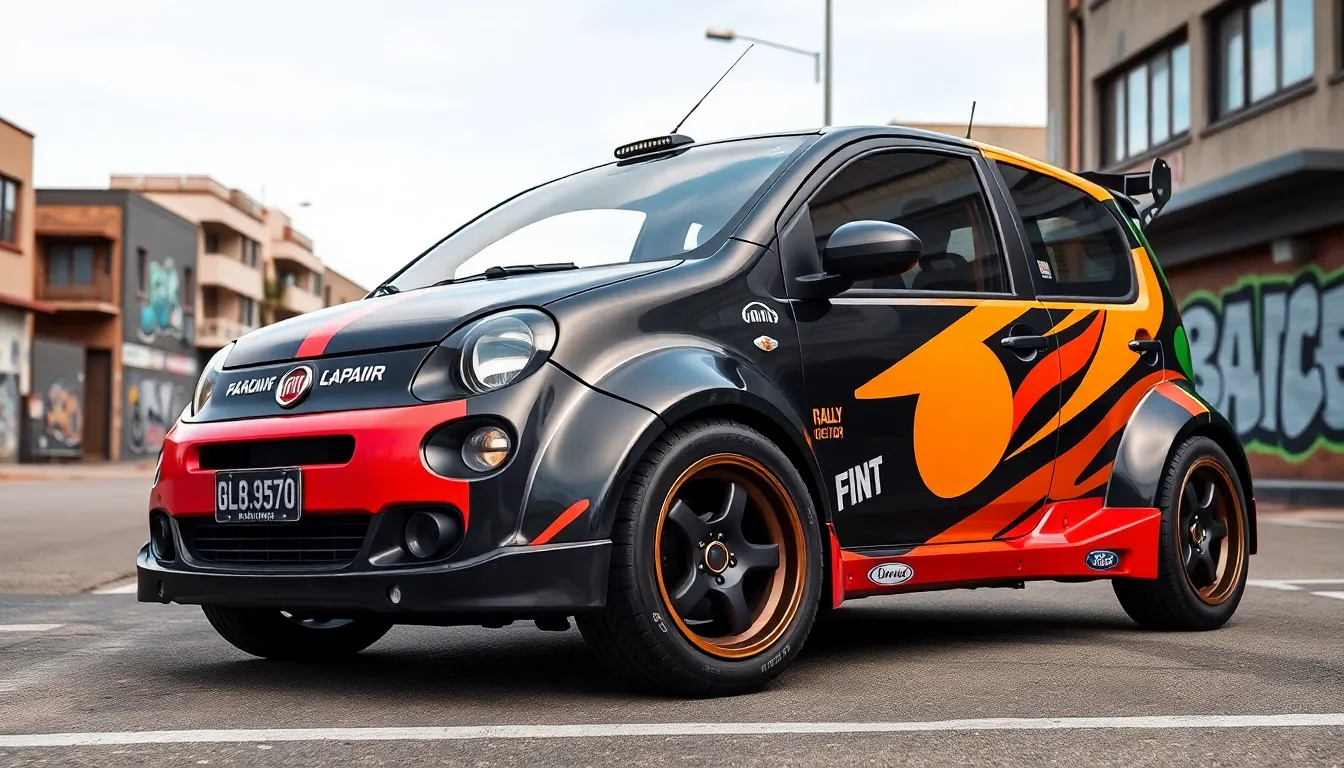
The Fiat Uno customizado community has developed distinct styling themes that reflect different automotive cultures and preferences. We’ll explore the most popular customization directions that enthusiasts pursue when transforming their compact Fiat into a personalized automotive statement.
Rally-Inspired Builds
Rally themed Fiat Uno builds capture the aggressive spirit of motorsport competition through functional modifications and distinctive visual elements. These builds typically feature widebody fender flares that accommodate wider 15-inch wheels wrapped in knobby all-terrain tires for enhanced grip on varied surfaces. Stripped down interiors showcase racing bucket seats paired with 4-point harness systems, while roll cages provide essential safety structure and authentic competition aesthetics.
Performance modifications in rally builds focus on suspension upgrades using adjustable coilover systems with increased ground clearance ranging from 2-3 inches above stock height. Engine bay modifications often include cold air intake systems, upgraded exhaust headers, and ECU tuning to maximize power delivery across different RPM ranges. External lighting upgrades feature auxiliary fog lights or LED light bars mounted on custom front bumpers, creating the distinctive rally car appearance that enthusiasts recognize immediately.
Paint schemes for rally builds commonly use white or bright colors as base coats accented with sponsor decals, racing numbers, and contrasting stripe patterns. Many builders incorporate mudflaps, skid plates, and reinforced bumpers that protect vital components during spirited driving while maintaining the authentic competition vehicle appearance.
Street Racing Aesthetic
Street racing styled Fiat Uno builds emphasize aggressive visual modifications combined with performance enhancements designed for urban environments. These builds feature lowered suspension systems using sport springs or coilover setups that reduce ride height by 1.5-2 inches, creating the characteristic slammed stance that defines street racing culture.
Wheel selections typically include lightweight 16-17 inch alloy rims wrapped in low-profile performance tires with sidewall heights ranging from 35-45 series for improved handling response. Body modifications include front splitters, side skirts, and rear spoilers that create aggressive aerodynamic profiles while improving the vehicle’s visual impact on city streets.
Interior modifications focus on modern technology integration featuring aftermarket head units with touchscreen displays, upgraded sound systems with component speakers, and ambient lighting systems that create distinctive cabin atmospheres. Custom seat covers, steering wheel wraps, and shift knobs provide personalized touches that reflect individual style preferences.
Engine modifications for street builds often include turbocharger installations, intercooler systems, and exhaust upgrades that produce noticeable sound signatures while delivering increased power output ranging from 100-150 horsepower depending on modification depth.
Retro Restoration Projects
Retro restoration themed Fiat Uno builds celebrate the original 1980s design philosophy while incorporating modern reliability improvements and subtle performance enhancements. These projects focus on preserving authentic factory aesthetics through period correct paint colors, original wheel designs, and vintage interior trim pieces that maintain historical accuracy.
Engine bay restorations typically involve complete rebuilds using original specifications combined with modern gaskets, seals, and electronic components that improve reliability without compromising authenticity. Classic color schemes include factory options like Rosso Corsa red, Bianco white, and Blu Medio blue that represent the original Fiat palette from the vehicle’s debut era.
Interior restorations emphasize original fabric patterns, dashboard configurations, and trim pieces while integrating discreet modern upgrades like hidden Bluetooth audio systems and LED lighting conversions that maintain period appropriate appearances. Many restoration builds incorporate subtle suspension improvements using upgraded bushings and dampers that enhance ride quality while preserving stock ride height specifications.
Documentation plays crucial roles in retro builds, with enthusiasts maintaining records of original parts, paint codes, and factory specifications that guide authentic restoration processes. These builds often feature period appropriate accessories like factory luggage racks, original radio designs, and vintage badging that complete the historical presentation.
Essential Tools and Equipment for DIY Fiat Uno Modifications
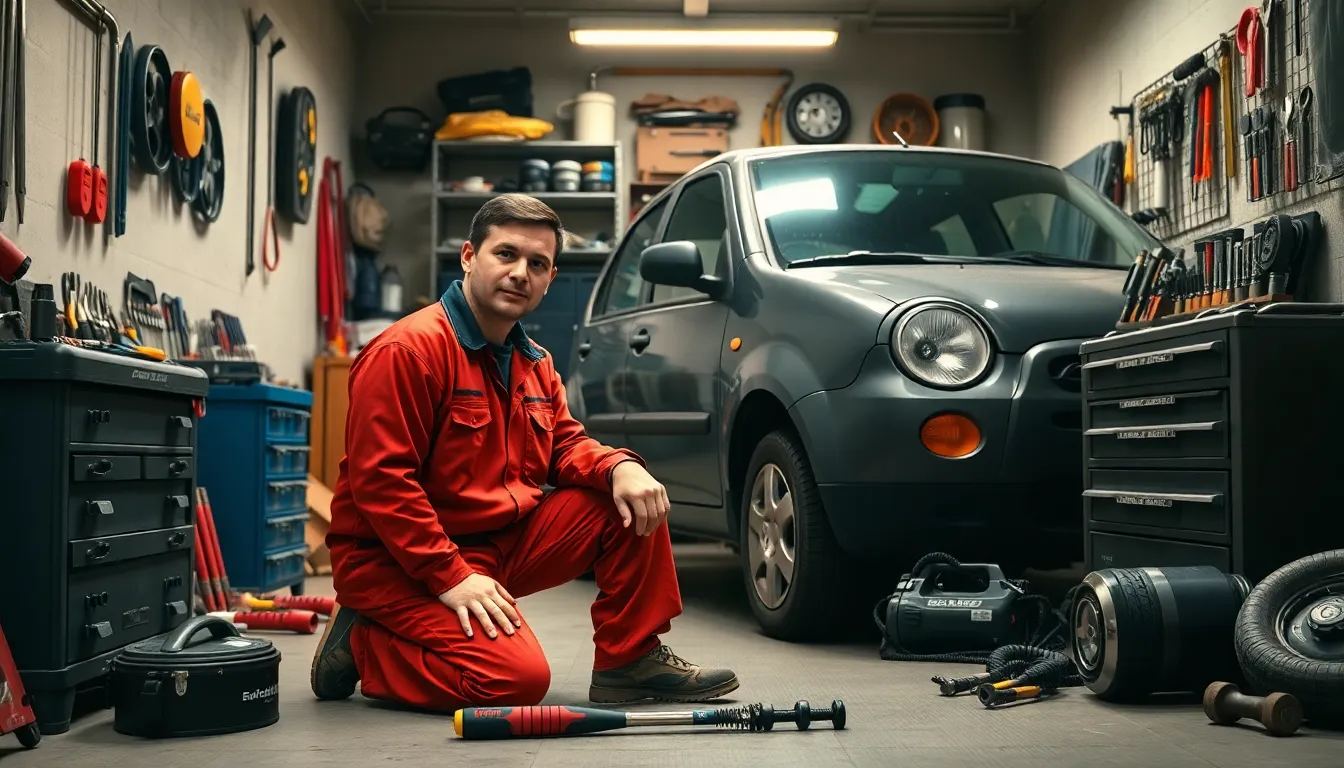
Successful Fiat Uno customization projects require proper tools and equipment to achieve professional results. We’ll explore the fundamental equipment needed to transform your compact Italian classic safely and effectively.
Basic Hand Tools and Specialty Equipment
Socket sets form the foundation of any Fiat Uno modification toolkit, with metric sizes ranging from 8mm to 19mm covering most fasteners on these Italian vehicles. Our experience shows that quality ratcheting handles and universal joints make accessing tight engine bay spaces significantly easier during performance upgrades.
Specialty automotive tools become essential when tackling exact Uno modifications like suspension lowering and brake system upgrades. Coil spring compressors safely compress springs during installation of performance coilovers, while ball joint separators remove suspension components without damage. Engine hoists rated for 1,000 pounds easily handle Uno engine swaps, considering the vehicle’s lightweight construction.
Precision measuring tools ensure proper fitment during custom modifications and performance tuning. Digital calipers accurately measure bolt specifications and clearances, while torque wrenches guarantee proper fastener tension according to Fiat specifications. Feeler gauges help set precise valve clearances during engine modifications.
| Tool Category | Essential Items | Typical Cost Range |
|---|---|---|
| Socket Sets | 8mm-19mm metric sockets | $50-$150 |
| Specialty Tools | Spring compressors, pullers | $100-$300 |
| Measuring Tools | Calipers, torque wrenches | $75-$200 |
Diagnostic Tools and Software
OBD diagnostic scanners provide crucial engine data during Fiat Uno performance modifications, especially when installing aftermarket ECU systems or monitoring turbocharger installations. Basic code readers cost around $30-$50, while professional grade scanners with live data streaming capabilities range from $150-$400.
Multimeters become indispensable when installing custom audio systems or troubleshooting electrical modifications in older Uno models. Digital versions with automotive settings help diagnose charging system issues and verify proper wiring connections during interior upgrades. Quality units typically cost between $40-$100.
Compression testers evaluate engine health before and after performance modifications, ensuring your Uno’s powerplant can handle increased boost pressure from turbocharging systems. Professional grade compression gauges provide accurate readings across all four cylinders, helping identify potential issues early in the modification process.
Tuning software unlocks the full potential of ECU modifications and chip upgrades discussed in performance sections. Popular programs like TunerPro RT allow custom fuel and ignition mapping for modified Fiat Uno engines, while VAG COM provides diagnostic capabilities for Volkswagen derived components.
Safety Equipment for Home Garage Work
Jack stands rated for at least 3,000 pounds provide secure vehicle support during suspension modifications and brake system upgrades. Quality stands with wide bases offer stability when working under your Fiat Uno for extended periods. Floor jacks rated for 2 tons easily lift the lightweight Uno chassis.
Safety glasses and gloves protect against metal shavings and chemical exposure during customization work. Impact resistant eyewear prevents injury when grinding body kit mounting points or modifying exhaust systems. Chemical resistant gloves shield hands during paint preparation and fluid changes.
Fire extinguishers designed for automotive use become critical when performing electrical modifications or working with flammable materials like paint and solvents. Class ABC extinguishers handle multiple fire types commonly encountered during vehicle customization projects.
Proper lighting illuminates work areas effectively during detailed modification tasks like interior upgrades and engine bay customization. LED work lights with magnetic bases provide hands free illumination, while portable flood lights brighten entire garage spaces during major projects.
Ventilation equipment removes harmful fumes during painting operations and chemical applications. Exhaust fans rated for garage use help maintain air quality, while respirators provide personal protection during bodywork and paint applications.
Cost Considerations When Planning Your Fiat Uno Customizado Project
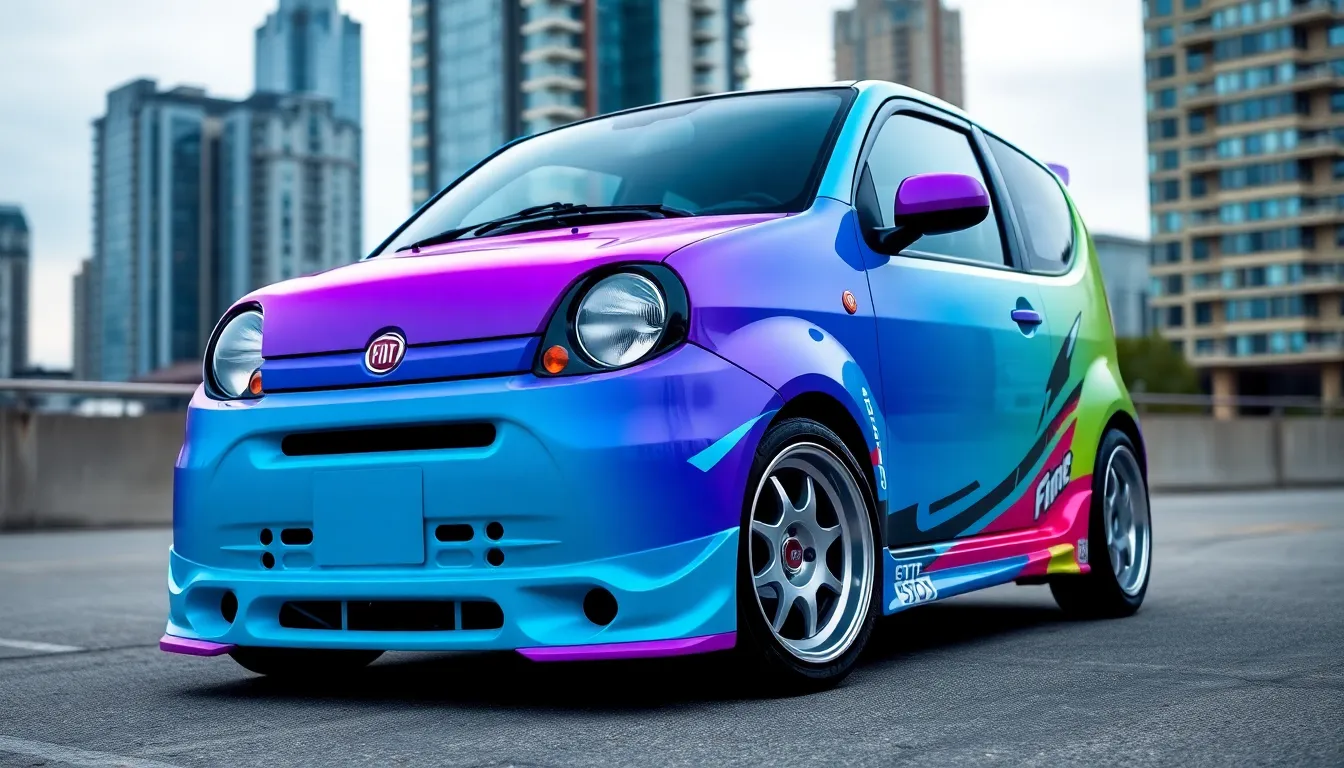
Understanding your budget constraints helps determine which modifications deliver the best value for your Fiat Uno customization project. Planning costs upfront prevents overspending and ensures your build stays on track.
Budget-Friendly Modification Options
Aesthetic upgrades under $300 can dramatically transform your Fiat Uno’s appearance without very costly. Vinyl wraps cost approximately $200-500 for a complete vehicle makeover, while aftermarket headlights and taillights range from $80-150 per set. Simple exterior modifications like side mirrors, door handles, and trim pieces typically cost $50-120 each.
Performance air filters represent excellent entry-level modifications that cost $30-60 while improving engine breathing. Cold air intake systems from brands like K&N range from $100-200 and provide noticeable throttle response improvements. These modifications require basic tools and can be installed in your garage over a weekend.
Suspension lowering springs offer important visual impact for $150-300, dropping your Uno’s ride height by 1-2 inches. Aftermarket strut tower braces cost $80-150 and improve chassis rigidity during cornering. These upgrades enhance both handling characteristics and street presence without requiring professional installation.
Interior modifications like seat covers, steering wheel wraps, and custom floor mats cost $50-200 total. LED interior lighting kits range from $25-75 and create a modern ambiance inside your Uno. Gauge bezels and trim pieces can be painted or wrapped for under $100 using DIY techniques.
High-End Performance Upgrades
Engine swap projects require budgets of $3,000-8,000 depending on your chosen powerplant and supporting modifications. Popular options include the 1.4L Turbo from newer Fiat models, costing approximately $2,500 for the engine plus $1,500-3,000 for installation and tuning. BMW motorcycle engines offer unique alternatives ranging from $4,000-6,000 for complete conversions.
Turbocharger systems for the stock engine cost $2,000-4,000 including intercoolers, piping, and ECU tuning. Professional installation adds another $800-1,500 to ensure proper setup and reliability. These modifications can increase power output from 70hp to 140hp with proper supporting modifications.
Custom body kits from specialized manufacturers cost $1,500-4,000 for complete front and rear treatments. Wide body conversions require professional installation costing $2,000-5,000 due to extensive metalwork and paint matching. These modifications create show-quality aesthetics but demand important investment.
Racing suspension systems like adjustable coilovers cost $800-2,500 depending on brand and features. High-end options from Ohlins or Bilstein range from $1,800-3,500 and offer professional-grade adjustability. Supporting modifications like performance brake systems add $1,200-3,000 for complete four-wheel upgrades.
Long-Term Investment Value
Quality modifications retain value better than budget alternatives, making premium parts worthwhile for serious builders. Engine performance upgrades typically recover 60-70% of their cost when selling, while aesthetic modifications recover approximately 40-50%. Documented maintenance records and professional installations significantly improve resale values.
Market demand for well-executed Fiat Uno customizado projects continues growing, especially for rally-inspired and retro builds. Clean examples with tasteful modifications sell for $8,000-15,000 in current markets, compared to $3,000-6,000 for stock vehicles. Regional preferences affect pricing, with European-style builds commanding higher values in certain markets.
Maintenance costs increase with modification complexity, requiring specialized knowledge and parts availability. Turbocharged engines need oil changes every 3,000 miles costing $60-80 each, while stock engines require service every 5,000 miles for $40-50. Performance brake pads last 15,000-25,000 miles and cost $150-300 per replacement.
Insurance considerations affect long-term ownership costs, with modified vehicles often requiring specialty coverage. Declared value policies protect your investment but cost 20-40% more than standard coverage. Some modifications void manufacturer warranties, requiring extended service agreements costing $800-1,500 annually.
Legal Requirements and Regulations for Modified Fiat Uno Vehicles
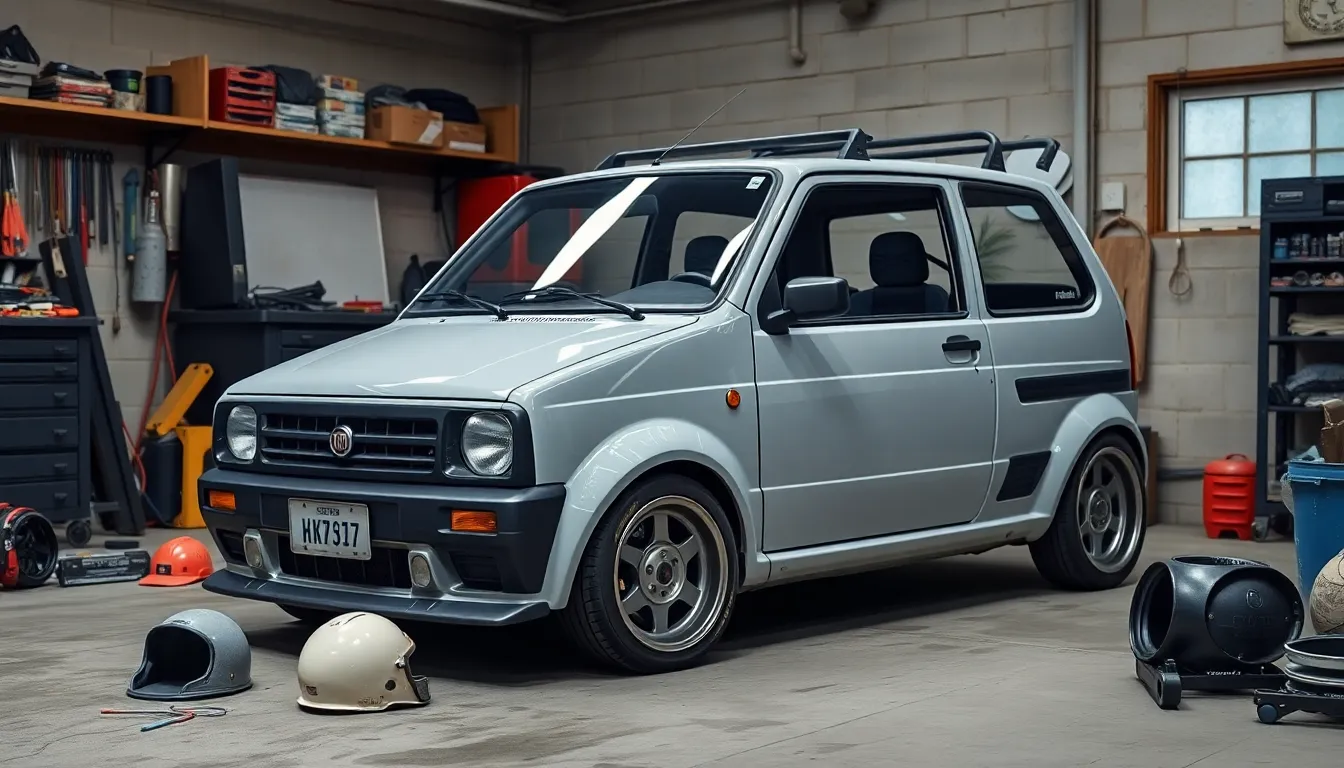
Understanding legal compliance becomes crucial when we transform our Fiat Uno through extensive modifications. We must navigate various regulatory requirements to ensure our customized vehicle remains street legal and properly insured.
Emissions and Safety Standards
Emissions compliance represents the first hurdle we encounter with engine modifications on our Fiat Uno customizado projects. Federal EPA regulations require all modified vehicles to meet original equipment manufacturer emissions standards, regardless of performance upgrades we install. Turbocharger systems and engine swaps must include proper catalytic converters and oxygen sensors to maintain legal operation.
Safety inspections vary significantly across different states, with some requiring annual checks of our modified suspension components, brake systems, and lighting modifications. California’s CARB regulations impose the strictest standards, requiring Executive Orders for aftermarket parts like cold air intakes and exhaust systems. We need CARB-compliant components to avoid failing smog tests and facing legal penalties.
DOT compliance becomes essential for any exterior modifications we make to our Fiat Uno projects. Headlight conversions must meet Federal Motor Vehicle Safety Standards, while bumper modifications cannot exceed height restrictions. Window tinting requires adherence to visibility percentage laws, typically allowing 70% light transmission for front windows in most states.
Registration and Insurance Considerations
Vehicle registration updates become necessary when we perform major modifications like engine swaps or chassis alterations on our Fiat Uno. State DMV offices require documentation proving the legality of modifications, including receipts for major components and professional installation certificates. We must report important changes in engine displacement, weight, or fuel type to maintain accurate registration records.
Insurance coverage typically increases for modified vehicles, with premiums rising 10-25% above standard rates for customized Fiat Uno projects. Specialty insurers like Hagerty and Grundy offer agreed value policies that protect our investment in modifications, though they require detailed documentation of all upgrades. We should declare all modifications to avoid claim denials, including performance parts, custom paint work, and interior upgrades.
Liability concerns expand with performance modifications, as insurance companies may scrutinize claims involving modified vehicles more carefully. Racing seats and roll cages can actually reduce premiums with some insurers who recognize enhanced safety features. We need to maintain all installation receipts and professional certification documents to support insurance claims.
Track Day and Competition Requirements
Sanctioning body rules govern our participation in organized racing events with modified Fiat Uno vehicles. SCCA autocross events typically allow most street legal modifications, while wheel-to-wheel racing requires exact safety equipment like roll cages, fire suppression systems, and racing harnesses. We must verify class eligibility before investing in competition-exact modifications.
Safety equipment mandates include properly certified helmets, racing suits, and Hans devices for most track events involving our customized Fiat Uno. Roll cage installations must meet exact fabrication standards, with DOM tubing and professional welding required for competition use. Racing fuel cells and master electrical shutoffs become mandatory for many racing series.
Tech inspection requirements demand documentation for all major modifications during pre-event scrutineering. Engine modifications require dyno sheets and technical specifications, while suspension changes need alignment reports and ride height measurements. We should prepare modification lists and supporting documentation to expedite the inspection process at racing venues.
Track insurance provides additional coverage for high-performance driving events, as standard auto policies exclude racing activities. Organizations like Lockton Motorsports offer event-exact coverage for track days, protecting our Fiat Uno investment during performance driving activities. We need separate coverage for organized racing competition versus casual track day participation.
Finding Quality Parts and Suppliers for Fiat Uno Modifications
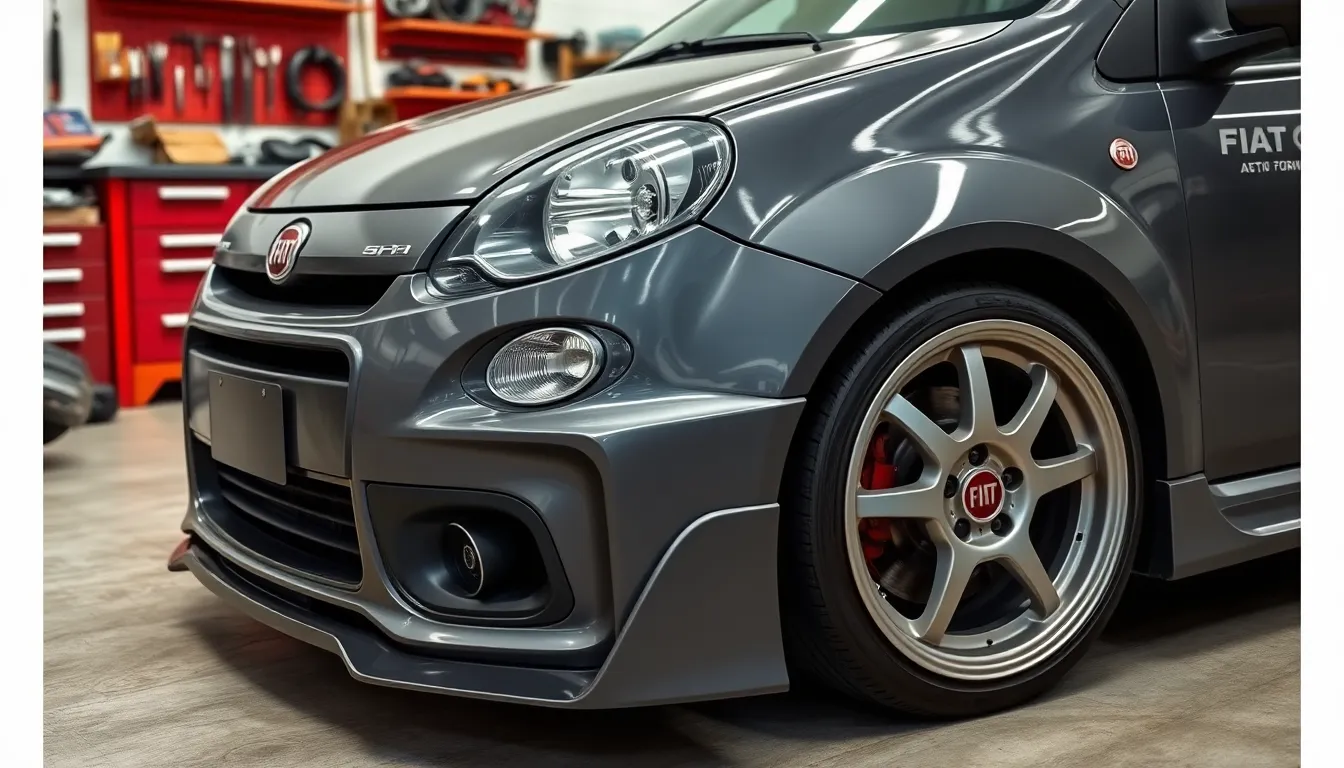
Sourcing the right components makes the difference between a successful customization project and costly setbacks. We’ll guide you through the essential considerations for finding reliable suppliers and quality parts for your Fiat Uno customizado build.
OEM vs Aftermarket Parts Selection
OEM parts offer unmatched reliability for critical systems like engine internals, transmission components, and safety equipment. These factory-spec components maintain the Uno’s original engineering tolerances and often provide warranty coverage that protects your investment. We recommend OEM parts for brake systems, suspension mounting points, and electrical components where precision matters most.
Aftermarket options deliver enhanced performance and customization flexibility at competitive prices. Performance brake pads from brands like EBC or Ferodo provide superior stopping power compared to stock components. Cold air intake systems and exhaust headers from reputable manufacturers often outperform factory equivalents while reducing overall project costs by 20-30%.
Quality aftermarket suppliers like Magneti Marelli, Bosch, and Valeo produce components that meet or exceed OEM specifications. These brands manufacture parts for multiple vehicle applications, ensuring better availability and often improved durability. We’ve found that aftermarket suspension components from KYB or Monroe typically offer better performance characteristics than original Fiat parts.
Cost considerations favor aftermarket parts for most modification projects, especially aesthetic upgrades like body kits, wheels, and interior accessories. Aftermarket spoilers and side skirts cost approximately $150-400 compared to rare OEM equivalents that can exceed $800. Performance modifications like turbocharger kits and engine management systems are exclusively available through aftermarket channels.
Reputable Online Retailers and Local Shops
FiatSpares.com specializes exclusively in Fiat components and maintains extensive Uno part catalogs with detailed compatibility information. Their technical support team provides expert guidance for modification projects and stocks both OEM and performance aftermarket options. We’ve consistently received quality parts with accurate fitment from this supplier.
Euro Car Parts offers comprehensive coverage for European vehicles including the Fiat Uno, with competitive pricing and frequent promotional discounts. Their online catalog includes detailed part diagrams and application guides that simplify the ordering process. Local pickup options reduce shipping costs and delivery times for urgent project needs.
GSF Car Parts provides professional-grade components with trade pricing available for serious builders. Their network includes over 175 locations across the UK, offering convenient access to parts and technical advice. We recommend establishing accounts with GSF for ongoing project support and preferred customer pricing.
Local Fiat dealerships maintain access to genuine parts through official channels, though availability varies significantly by location. Service departments can often order discontinued components through internal networks or suggest suitable alternatives. Parts pricing typically runs 15-25% higher than online retailers but includes professional installation support.
Independent European car specialists often stock hard-to-find Uno components and provide valuable modification expertise. These shops frequently maintain relationships with performance parts suppliers and can source custom fabrication services. We suggest visiting local specialists to assess their inventory and technical capabilities before committing to major projects.
Import Considerations for Rare Components
Brazilian market components offer unique modification opportunities since Fiat continued Uno production in South America through 2013. These parts include modern engine management systems, updated interior components, and performance variants unavailable in European markets. Import duties typically add 25-30% to component costs plus shipping expenses.
Shipping logistics require careful planning for international component purchases, especially for heavy items like engines or transmission assemblies. Sea freight reduces costs for large shipments but extends delivery times to 6-8 weeks. Air freight expedites delivery to 1-2 weeks but increases shipping costs by 200-300% for heavy components.
Documentation requirements include detailed customs declarations specifying part numbers, vehicle applications, and declared values. Incomplete paperwork causes delays and additional fees that can extend project timelines significantly. We recommend working with import specialists who understand automotive component regulations and can handle customs procedures properly.
Quality verification becomes critical for imported components since return shipping costs often exceed part values. Request detailed photos, part numbers, and condition reports before finalizing purchases from international suppliers. Establish clear communication channels and payment protection through platforms like PayPal or credit card services that offer dispute resolution.
Regional compatibility issues affect electrical components, emissions equipment, and safety systems that vary between markets. European Uno models use different connector types and wiring harnesses compared to Brazilian variants. We advise consulting wiring diagrams and compatibility charts before ordering imported electrical components to avoid costly installation problems.
Conclusion
The Fiat Uno customizado represents one of the most rewarding projects in automotive customization today. We’ve shown you that this compact Italian classic offers endless possibilities whether you’re pursuing rally-inspired builds street racing aesthetics or retro restorations.
Your success depends on careful planning proper tool selection and understanding the legal requirements in your area. We recommend starting with budget-friendly modifications and gradually advancing to more complex engine and suspension upgrades as your skills develop.
The thriving community support and availability of both OEM and aftermarket parts make the Fiat Uno an excellent choice for first-time builders and experienced enthusiasts alike. With proper execution your customized Uno won’t just deliver exceptional performance and unique style—it’ll also maintain strong resale value for years to come.
Frequently Asked Questions
What makes the Fiat Uno ideal for customization projects?
The Fiat Uno is perfect for customization due to its lightweight 1,653-pound chassis, simple mechanics, and affordable parts availability. Its uncomplicated engineering with naturally aspirated engines (0.9L to 1.4L) makes it accessible for first-time customizers while offering impressive performance potential through modifications. The strong community support network also provides valuable resources and guidance for builders.
How much power can I expect from a turbocharged Fiat Uno?
A properly tuned turbocharged Fiat Uno with a small T25 turbo setup can increase power from the stock 70hp to approximately 120-140hp. This represents a significant performance boost while maintaining reliability. Supercharging is also an option for those seeking instant throttle response, though costs and complexity should be carefully considered.
What are the most popular Fiat Uno customization themes?
The three most popular themes are rally-inspired builds featuring functional modifications and aggressive aesthetics, street racing styles emphasizing urban performance and visual impact, and retro restoration projects that celebrate the original 1980s design while incorporating modern reliability improvements. Each theme offers unique modification opportunities and styling directions.
What’s the typical budget range for Fiat Uno modifications?
Budget-friendly modifications like aesthetic upgrades can cost under $300, while performance enhancements such as air filters and cold air intakes remain affordable. High-end modifications including engine swaps and turbocharger systems can cost significantly more. Well-executed projects often retain strong resale value, making quality modifications a worthwhile long-term investment.
Do I need special permits for a modified Fiat Uno?
Modified Fiat Uno vehicles must comply with local emissions and safety standards. Requirements vary by state and may include emissions compliance testing, safety inspections, and proper documentation. Modified vehicles typically require updated insurance coverage and detailed documentation. Track day participation requires additional safety equipment and tech inspections.
Where can I find quality parts for Fiat Uno customization?
Quality parts are available through reputable online retailers, local specialty shops, and Brazilian market suppliers. OEM parts are recommended for critical systems, while aftermarket options offer performance and cost benefits. When importing rare components, consider shipping logistics, documentation requirements, and quality verification to avoid costly issues.
What tools do I need for DIY Fiat Uno modifications?
Essential tools include basic hand tools, specialty equipment, and precision measuring instruments. Safety equipment like jack stands, safety glasses, and fire extinguishers are crucial. Diagnostic tools help ensure proper installation and tuning. The complexity of your modifications will determine the specific tools required for your project.
How do suspension upgrades improve Fiat Uno performance?
Suspension upgrades like lowering springs and coilover systems enhance both performance and aesthetics. Anti-roll bars and strut tower braces improve handling and chassis stiffness. These modifications reduce body roll, improve cornering ability, and provide better road feedback while maintaining ride comfort for daily driving applications.

